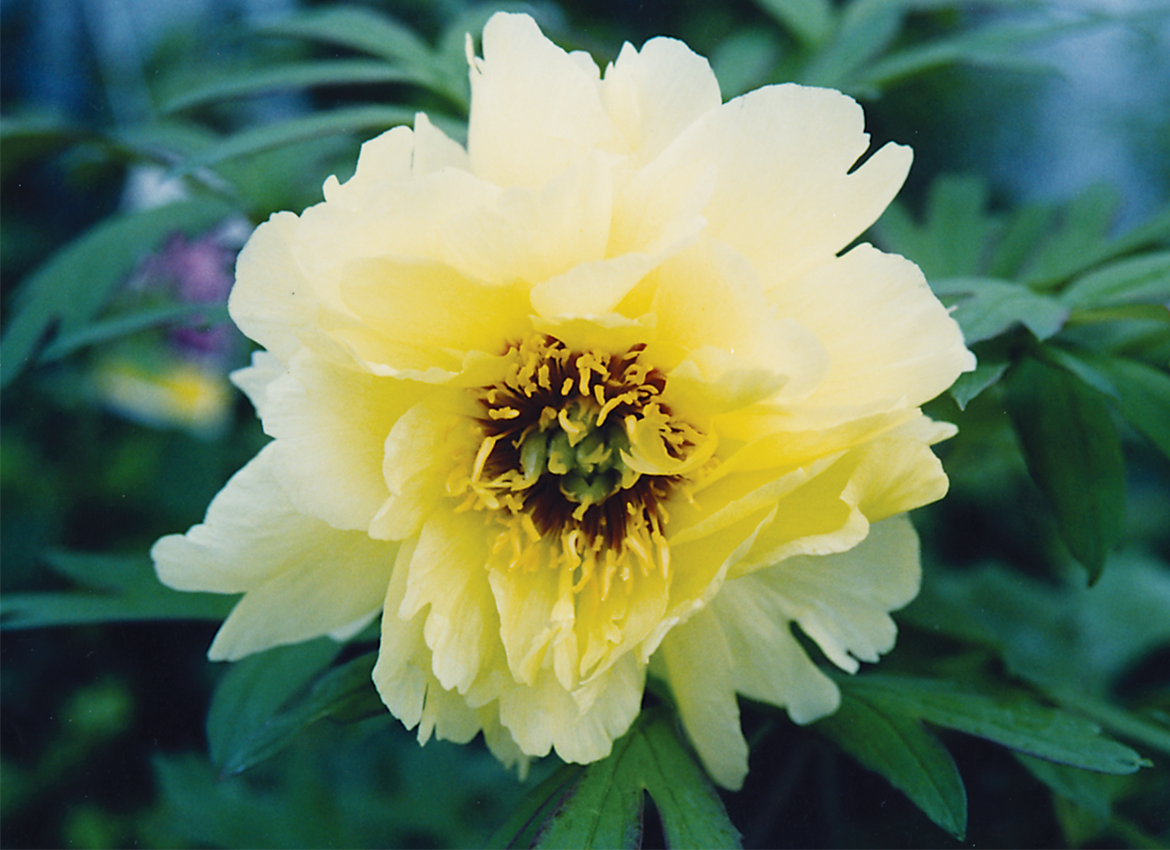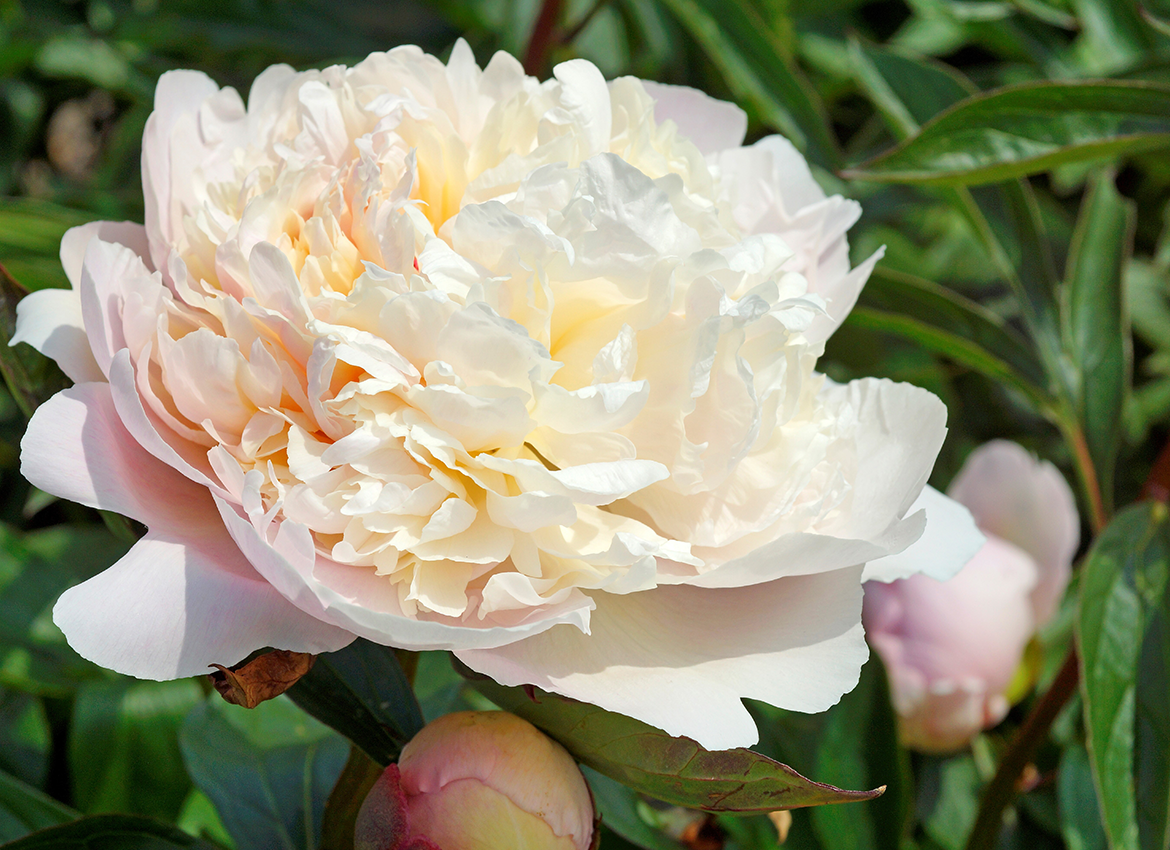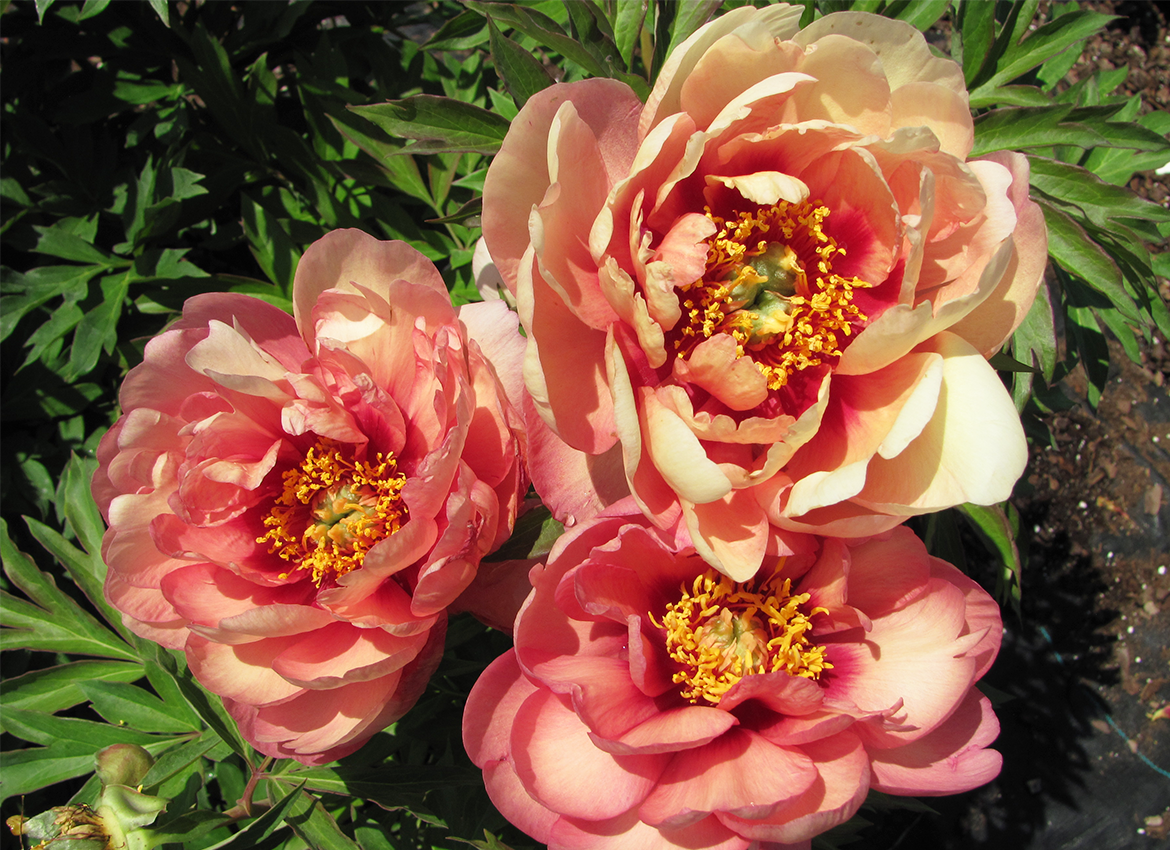Outdoor Plants, Spring
Growing Peonies: Planting, Splitting and Transplanting
May 4, 2022
Peonies are one of the hardiest and most beloved perennials. Their beautiful showy flowers can last from spring right through summer, and make for outstanding long-lasting cut flower displays. Their lush green foliage makes them a garden focal point.
How to Plant Peonies
Peonies are incredibly long-lasting plants. These hardy perennials do best in a sunny spot where they will receive 6 to 8 hours of sun per day. However, they can also work well in a location that gets a good dose of morning sun and then afternoon shade.
When planting, ensure your peony will get good air circulation and that is not crowded with other plants. The soil should be rich, fertile, and well-draining as the root base will eventually spread to about 3 feet in diameter. Be sure to allow at least 3 feet of space between your peony and any other plants.
New peonies are best planted in the spring as soon as the ground can be worked. If purchasing a container peony, it is best to dig the hole at a depth of the container and allow 2 inches of soil to surround the root ball.
Use peonies to line walkways or as a group for a low hedge. Be sure to plant them in a location that is sheltered from the strong winds or harsh weather.
Types of Peonies
There are three main types of peonies, and each may suit a different spot in your garden.
TREE PEONIES
Tree peonies are deciduous woody shrubs and their stems stay above ground all year. Mature plants can grow approximately 4 to 7 feet tall with a width of up to 5 feet.
Tree peonies are often used for hedging or borders and make for an excellent privacy screen. They bloom in mid to late spring and have tremendously large flowers that can be up to 7 to 10 inches across in size.
After flowering, the shrubs have lovely green foliage that will remain deep green throughout the summer and turn a warm bronze purple in fall.
HERBACEOUS PEONIES
Herbaceous peonies are probably the most common peony type and can flourish in the right spot for decades. Their stems rise from the ground in the spring and then die back at the end of the season.
Herbaceous peonies are low maintenance, and they grow best in rich soil with good drainage. They will typically grow to 2 to 3 feet tall, and when in bloom, the weight of their flowers will always require some type of support. They are fast-growing plants that love the sun and attract many pollinators to your garden.
ITOH PEONIES
Itoh Peonies are a hybrid blend of herbaceous and tree peonies. They will sprout each year from the ground and die back at the end of the season.
They have huge, beautiful blooms and are very sturdy and tend to be an excellent border plant as they do not require support or staking.
Support for Herbaceous Peonies
As Herbaceous peonies begin to bloom, the weight of their flowers can cause them to fall to the ground and ultimately spoil their blooming time. The taller the plants, the more staking will be needed. The best time to add support is in the spring, as soon as your peonies sprout.
TYPES OF SUPPORTS
Grow through plant supports – These metal frames are placed in the spring and allow the plant stems to grow through the grid to support the top-heavy flowers. They come in various sizes, and mature plants with heavier blooms will require a larger size.
You can place the grid above the plant’s crown in the spring, and as the plant grows, you can gradually raise it as the plant begins to flower.
Tomato cages – may be a little tall for some peonies but can be adjusted to fit based on the height of the plant. You may need to trim the metal cage legs to the appropriate height using wire cutters, and then place the tomato cage over the plant’s crown in the spring and allow the stems to grow up through the cage to provide support.
Garden Stakes – If your plant is exceptionally large, you may choose to use garden stakes and garden twine to create circular support around your plant. A garden stake can be placed a few inches from the root ball and gently pushed or hammered into the ground. You can put two or three stakes around the plant until you have made a circle.
You can then tie the twine to attach the plant stake and wrap it around to the next stake to create support and complete the circle around the plant.
In the fall, you can remove the peony supports and wash them to store for the next season.
Splitting and Transplanting Peonies
When your peonies mature and become larger you can actually divide the plant to add to a new spot in your garden or even give to a friend. Early fall is the ideal time to split peonies as they will have finished flowering and will now be in a dormant state.
Be sure to split them before the first frost so when you relocate the divided plant it has plenty of time to establish its new roots.
STEPS TO DIVIDE A PEONY
- Cut back the plant stems to about 2 or 3 inches just above the ground to easily see the roots.
- Using a large spade, dig about 6 to 12 inches around the perimeter of the plant and root ball to lift the entire plant without damaging the roots. Once loosened, pull the root ball out of the ground
- Remove any excess soil from the root by shaking the plant or rinsing with a hose
- Identify each section of the roots with at least 3 to 5 buds or eyes.
- Use a clean, sharp knife or spade to divide the plant into sections. These sections are now ready to be transplanted.
TRANSPLANTING
- Choose a spot that will get enough sun, good air circulation and drainage.
- Dig a hole about 10 to 12 inches deep. You can also add some organic material such as compost or peat moss to ensure a good start.
- Place the root section into the hole and allow for the pink eyes or buds to be covered in no more than 2 inches of soil. If you plant too deep, the plant may not bloom in the future.
- Fill the hole with remaining soil and press gently to ensure the roots are covered and firmly in place.
- Water generously.
To protect your new plant, you can add a layer of mulch later in the fall. Remove the mulch in the spring so the plant receives good air circulation.
Visit any of our garden centers for a wide selection of peonies and garden supplies.
Our professional gardening experts are always happy to help you find the best plants and products for your garden.
SHARE THIS ARTICLE


